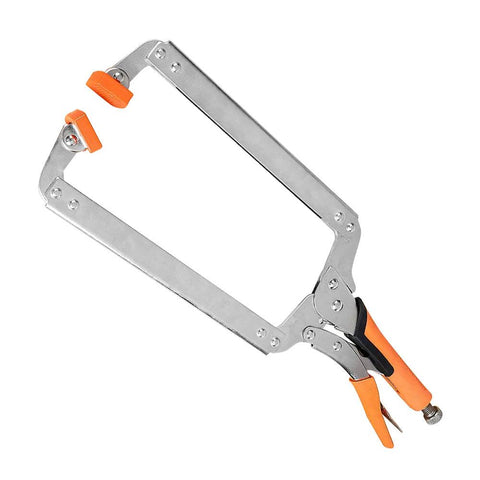|
In the realm of woodworking, precision, control, and stability are non-negotiable elements that contribute to the success of any project. Among the many tools that help achieve these qualities, the humble C-clamp stands out as one of the most reliable and versatile. With its simple yet sturdy design, the C-clamp is a fundamental tool in any woodworker's arsenal, essential for holding materials firmly in place during a variety of tasks. Whether you are gluing, cutting, drilling, or assembling, the C-clamp provides the extra hand you need to ensure your work remains steady, allowing you to focus on the task at hand. At first glance, the C-clamp appears to be a straightforward tool: it consists of a C-shaped frame, a threaded screw that moves through one end of the frame, and a flat pad or swivel head at the end of the screw. But it is this simplicity that makes the C-clamp so effective. Its sturdy construction and adjustable screw mechanism allow it to apply a significant amount of pressure, keeping wood pieces secure without the risk of movement or slippage. This is crucial in woodworking, where even the slightest shift can result in imprecise cuts, poorly aligned joints, or gaps between glued surfaces. One of the most common uses of the C-clamp in woodworking is to hold pieces together during the gluing process. When wood is joined using adhesives, it is essential that the pieces are held tightly together while the glue dries. C-clamps are perfect for this job, as they can apply strong, consistent pressure to ensure that the glued surfaces bond correctly. Without this pressure, the glue might not adhere properly, leading to weak joints that can break under stress. The ability to precisely adjust the clamp's pressure means that the woodworker can apply just the right amount of force - enough to create a strong bond without damaging the wood. C-clamps are also indispensable when it comes to cutting or drilling wood. In these situations, the workpiece must remain stationary, as any movement can lead to mistakes that are difficult to correct. C-clamps secure the wood to a workbench or other stable surface, ensuring that it won't shift while a saw or drill is in use. This added stability not only improves the accuracy of the cuts and holes but also enhances safety. Working with power tools requires careful control, and trying to hold a piece of wood steady by hand can be dangerous, especially when using powerful saws or drills. The C-clamp takes on the responsibility of securing the wood, allowing the woodworker to concentrate fully on guiding the tool. In addition to gluing and cutting, C-clamps are frequently used in the assembly phase of woodworking projects. When joining multiple pieces to form a finished product, such as a table, chair, or frame, precision is key. C-clamps are often employed to hold parts together temporarily while screws, nails, or dowels are inserted. This temporary hold ensures that the pieces align perfectly before they are permanently fastened. The ability to adjust the clamp's position and pressure allows the carpenter to make micro-adjustments, ensuring that joints fit snugly and surfaces meet flush, which is crucial for both the strength and appearance of the final piece. Another valuable use of the C-clamp in woodworking is during sanding or planing. These tasks require even pressure to smooth the wood's surface without gouging or creating uneven spots. By securing the wood in place with C-clamps, the woodworker can focus on applying consistent strokes with sandpaper or a plane, resulting in a clean, smooth finish. Without the help of clamps, it would be much more difficult to hold the wood steady while achieving the level of smoothness required for a professional-quality result. Despite its many uses, the C-clamp is not without its limitations. It is important to note that over-tightening a C-clamp can damage the wood, particularly when working with softer woods or delicate veneers. This is why it's crucial to choose the right size of clamp for the job and to apply pressure gradually, ensuring a firm hold without crushing or denting the material. Many woodworkers also use small pads or scraps of wood between the clamp and the workpiece to distribute the pressure more evenly and prevent marring the surface. The C-clamp's versatility, strength, and simplicity make it a must-have tool in woodworking. From gluing and cutting to assembling and sanding, it plays a crucial role in ensuring that projects are completed with precision, safety, and care. For both beginners and experienced woodworkers alike, a collection of high-quality C-clamps is an investment that will pay off in countless ways. Whether you are building intricate furniture, crafting decorative items, or simply making repairs, the C-clamp will provide the stability and control needed to bring your woodworking visions to life. 
|
